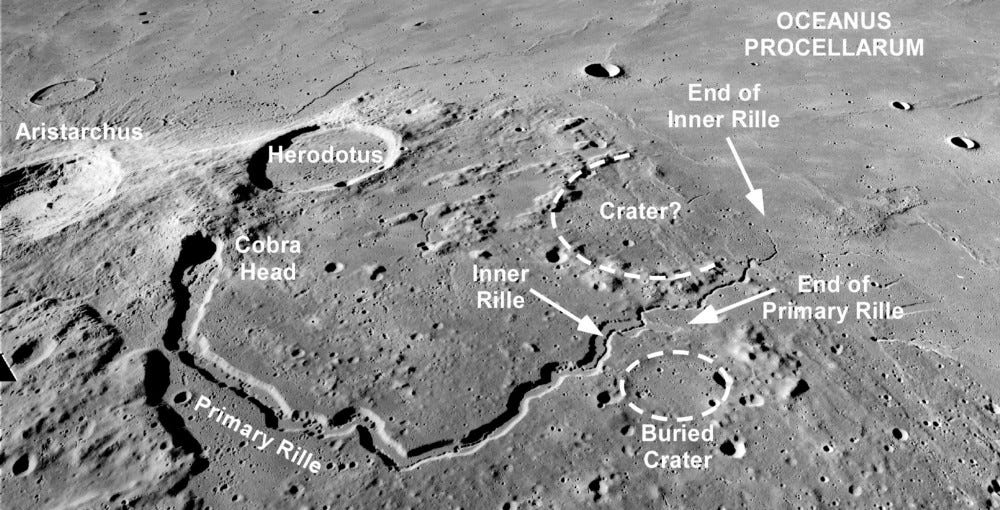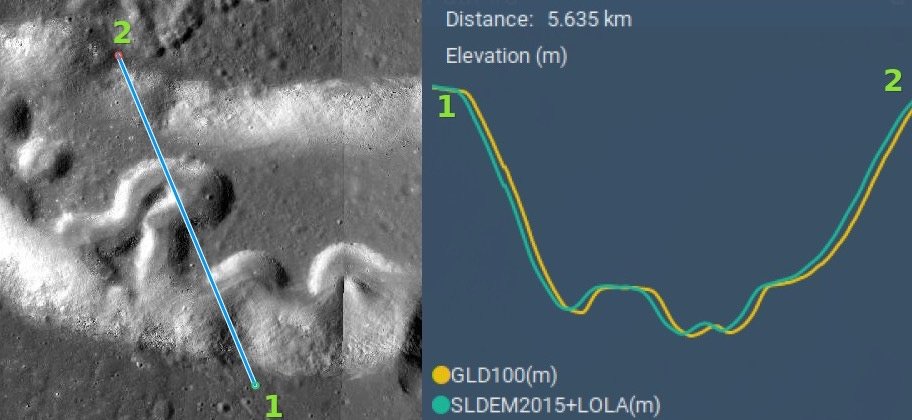The Moon's Grand Canyon
The largest valley on the Moon, Vallis Schröteri, is a great place to study the Moon's past lava flows.
Seen here is the largest valley on the Moon, Vallis Schröteri. Comparable to the Grand Canyon on Earth, Vallis Schröteri is approximately 160 kilometers long, up to 11 kilometers wide and almost 0.5 kilometers deep.

The Moon is home to a lot of lava channels, which formed at times when it was volcanically active. Such narrow and deep channels/valleys, called rilles, are found at multiple places on the Moon. Such rilles are thought to have formed when large volumes of lava erupted during volcanic events and flowed rapidly on the surface.
The rille of Vallis Schröteri seems to have its source vent at the “Cobra Head” like feature seen to the middle-right in the image. The river-like sinuous nature of the rille however, is a mystery. Look closely and you will see that there is another rille within the primary rille! As seen to the left in the image, the secondary rille extends far beyond the primary one. Such nested form of valleys indicate a possibility of multiple past volcanic eruptions.
Here’s an annotated and rather-gorgeous oblique view of the rille.

And here is a closeup of a section of the valley.

We can use the draw tool from the wonderful LROC Quickmap to see a depth profile to appreciates the dips in depth as the secondary channel cuts across.

There's also a 3D view of the area from my 3D Moon post. Put on your 3D glasses!

Judging by the striking twists and turns, the lava that carved these channels must be highly fluid, much like the previously covered Rimae Prinz and Rimae Posidonious. Physically examining and sampling more such sinuous lava channels via future lunar missions is exciting because they expose layers of past lava flows, giving us an entry point into the Moon's volcanic history.

